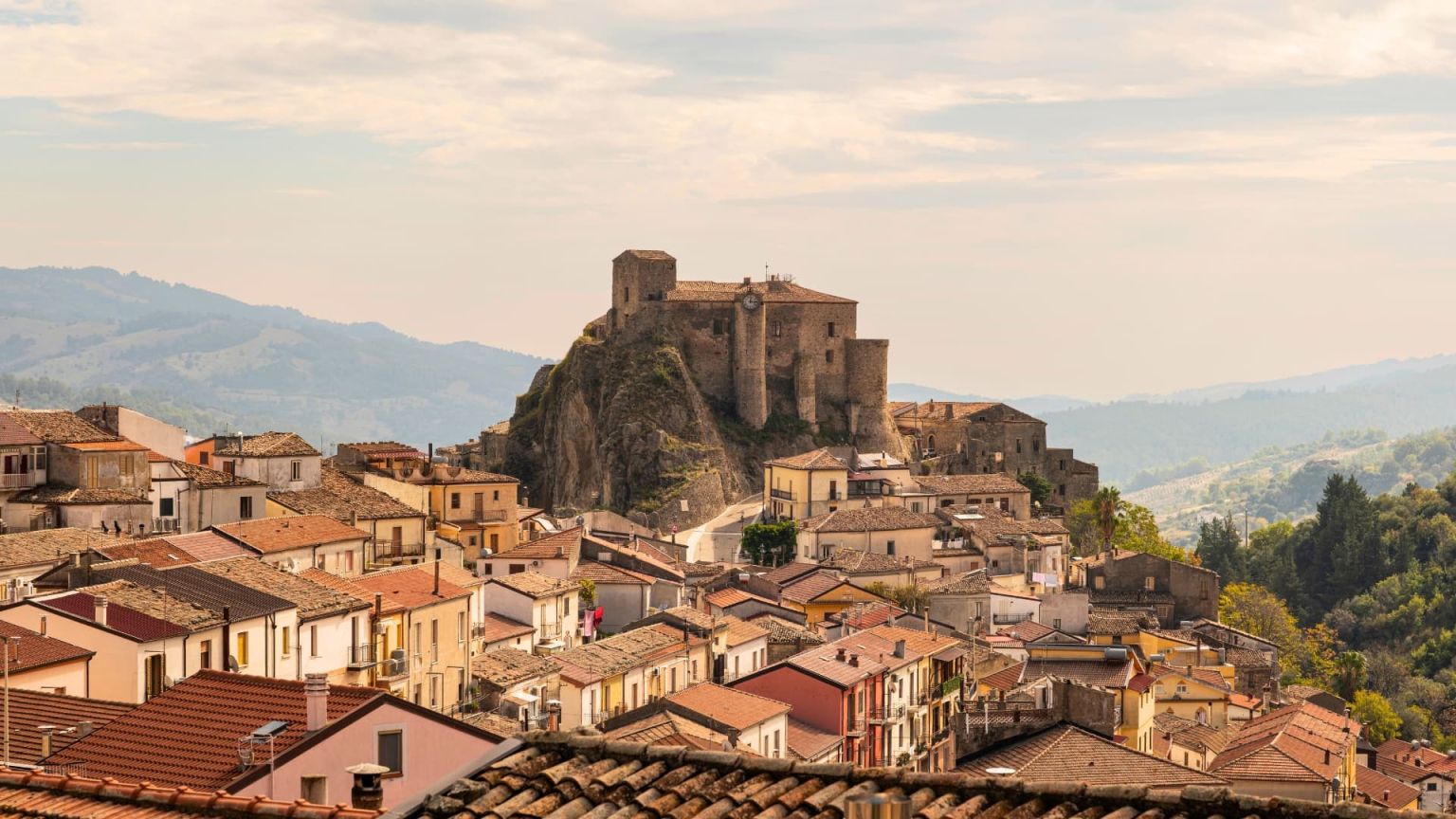Perched 450 metres above sea level, between the shimmering blue of the Ionian Sea and the rugged peaks of the Pollino National Park, the ancient town of Oriolo unfolds like a labyrinth of stone houses clinging to a sandstone ridge. It’s one of those rare places where the phrase “time stands still” truly fits. In its medieval alleys, the present, shaped by renewal and sustainability, weaves into traditions that have never really faded.
Today, Oriolo is rediscovering itself through culture, community, and beauty. The village is rewriting its own story without losing sight of its roots. This is your invitation to discover what to see, experience, and savour in one of Calabria’s most enchanting little gems. Ready to visit Oriolo?
Visit Oriolo, the Medieval jewel between mountains and sea

Oriolo overlooks the valley of the Ferro River like a watchful sentry anchored to the rock. Born as a fortress guarding against sea raids, the village still carries that defensive spirit in its stone walls, its castle, and the compact layout of its historic centre.
Though its original character remains intact, the former stronghold has evolved into a place of serene beauty and cultural depth.
The modern-day revival is closely tied to a growing emphasis on sustainable tourism and a new kind of hospitality grounded in local life.
Surrounded by rolling hills dotted with olive groves, walnut trees, and fertile fields, and framed by stretches of mountain landscape, Oriolo could easily remind you of rural Greece. It’s a haven for walkers and nature lovers, with trekking routes and countryside trails just a short drive from the sea.
Here’s what you need to know before you visit Oriolo.
More info on Oriolo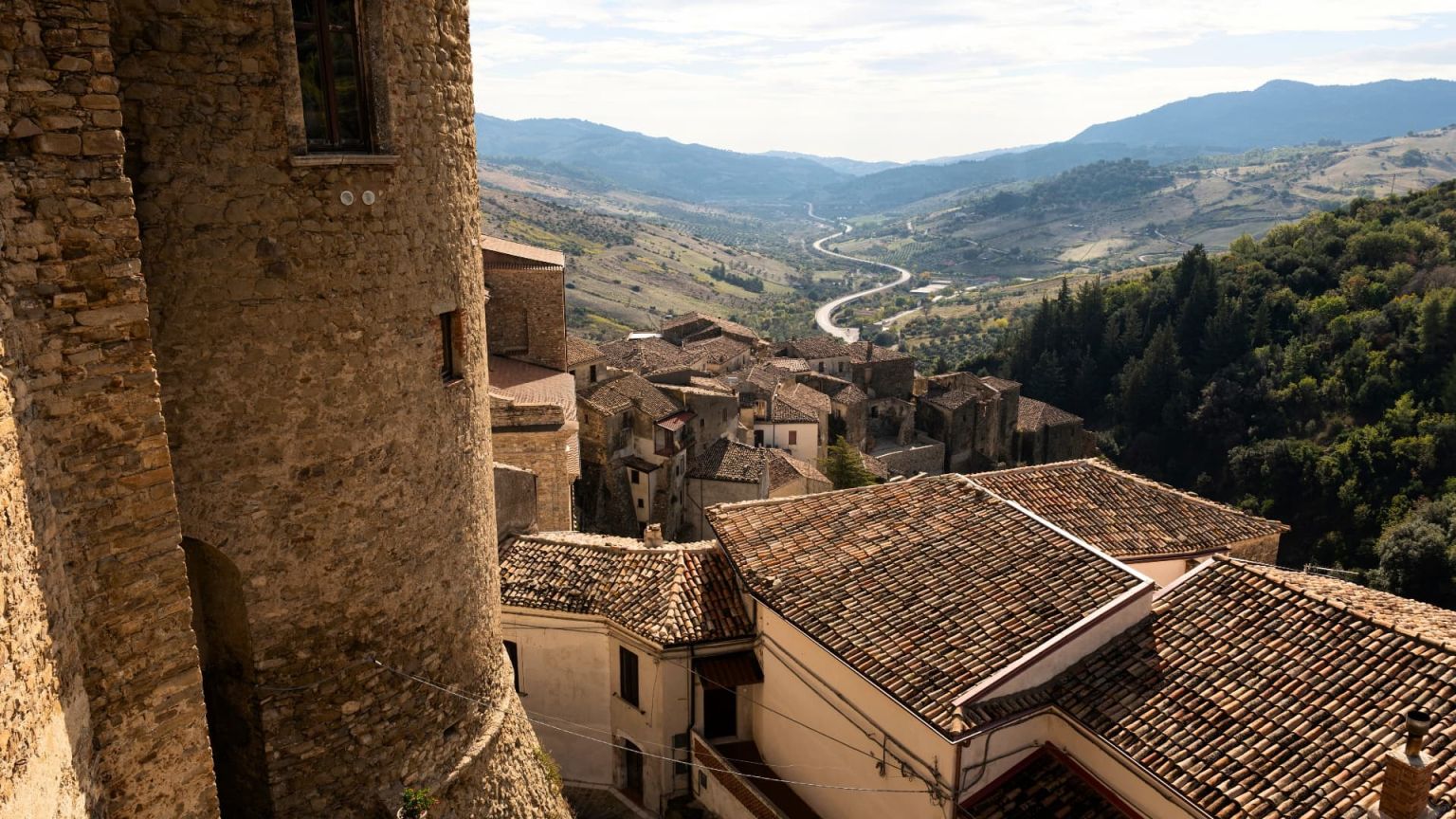
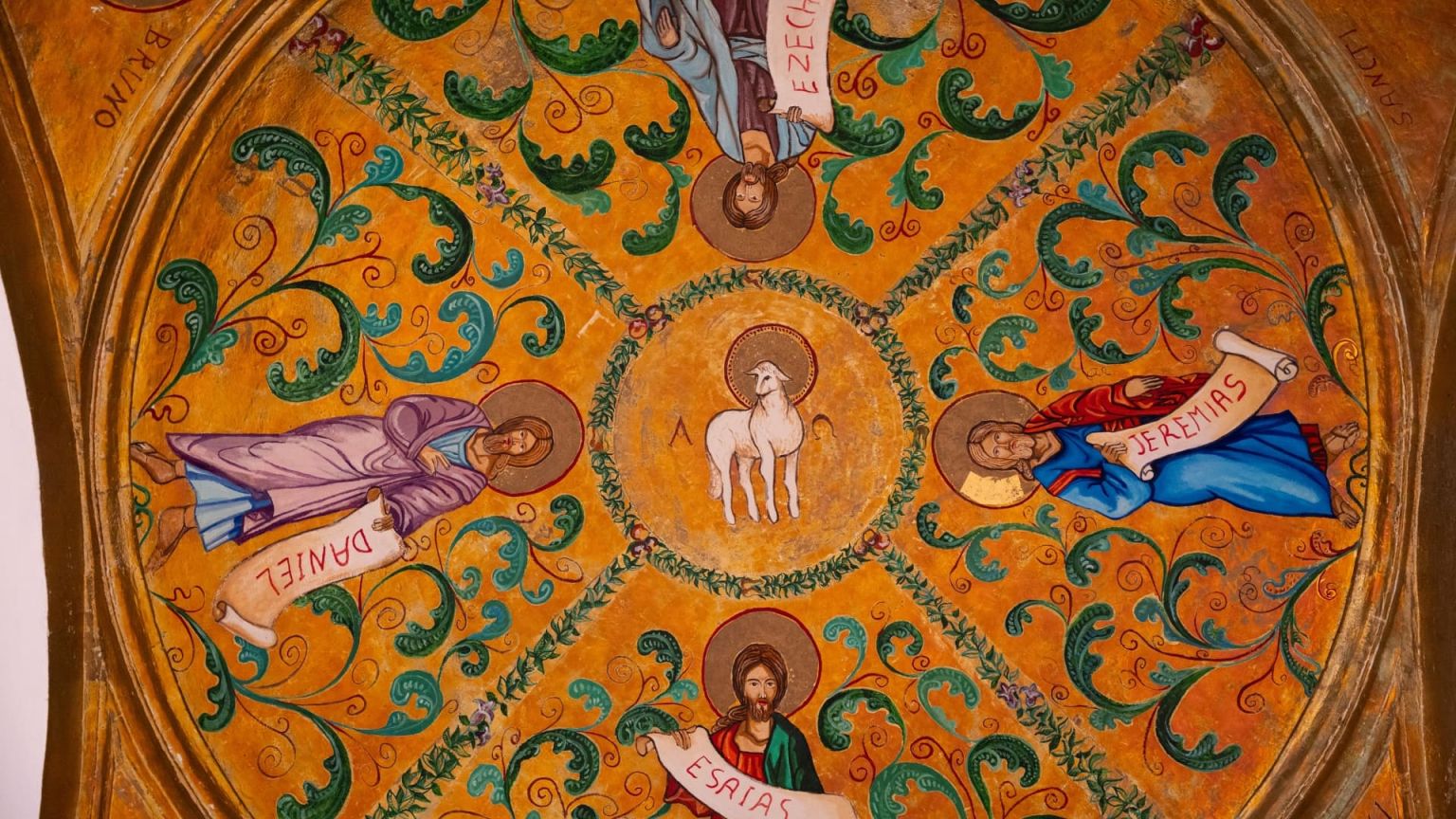
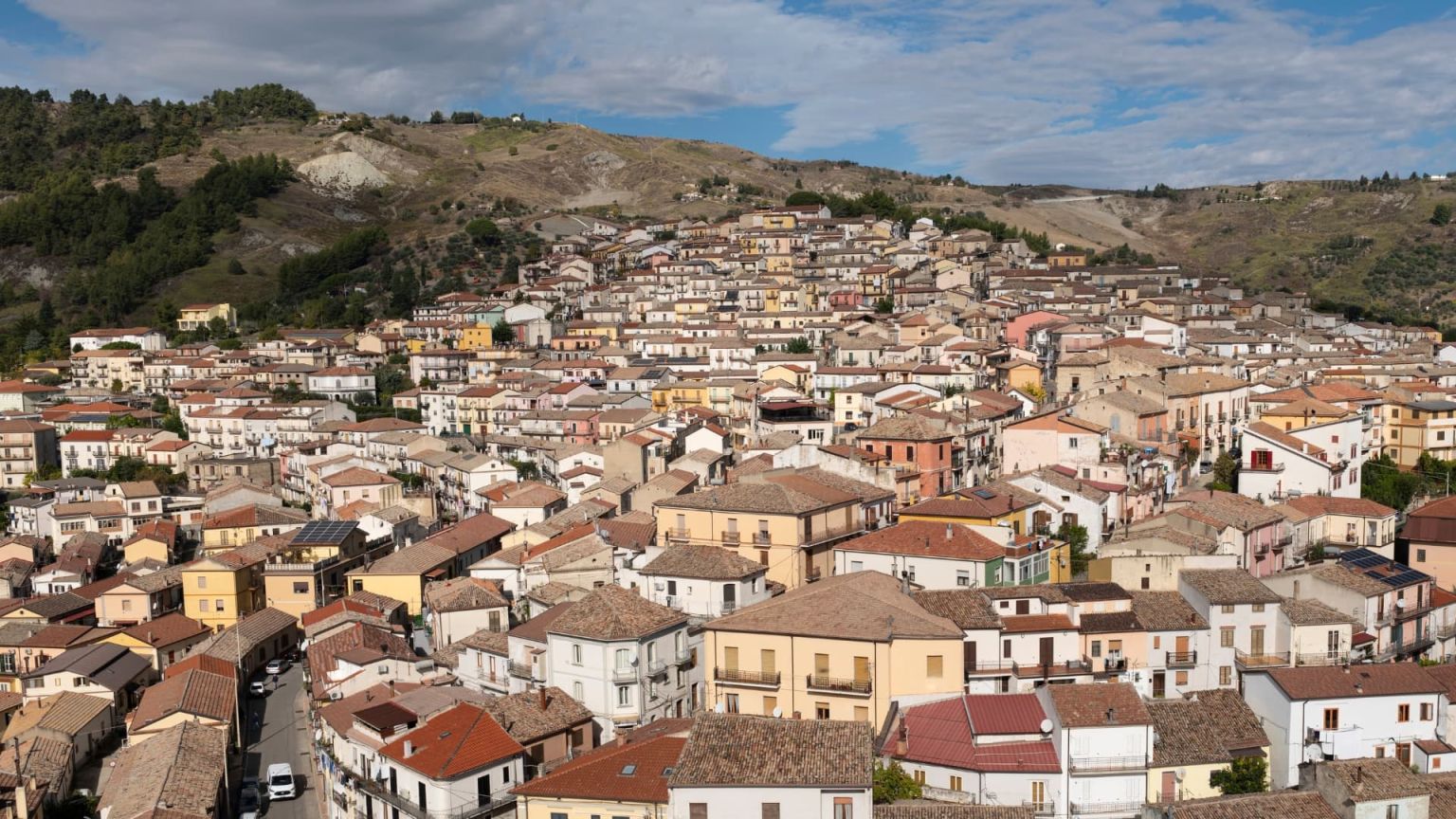
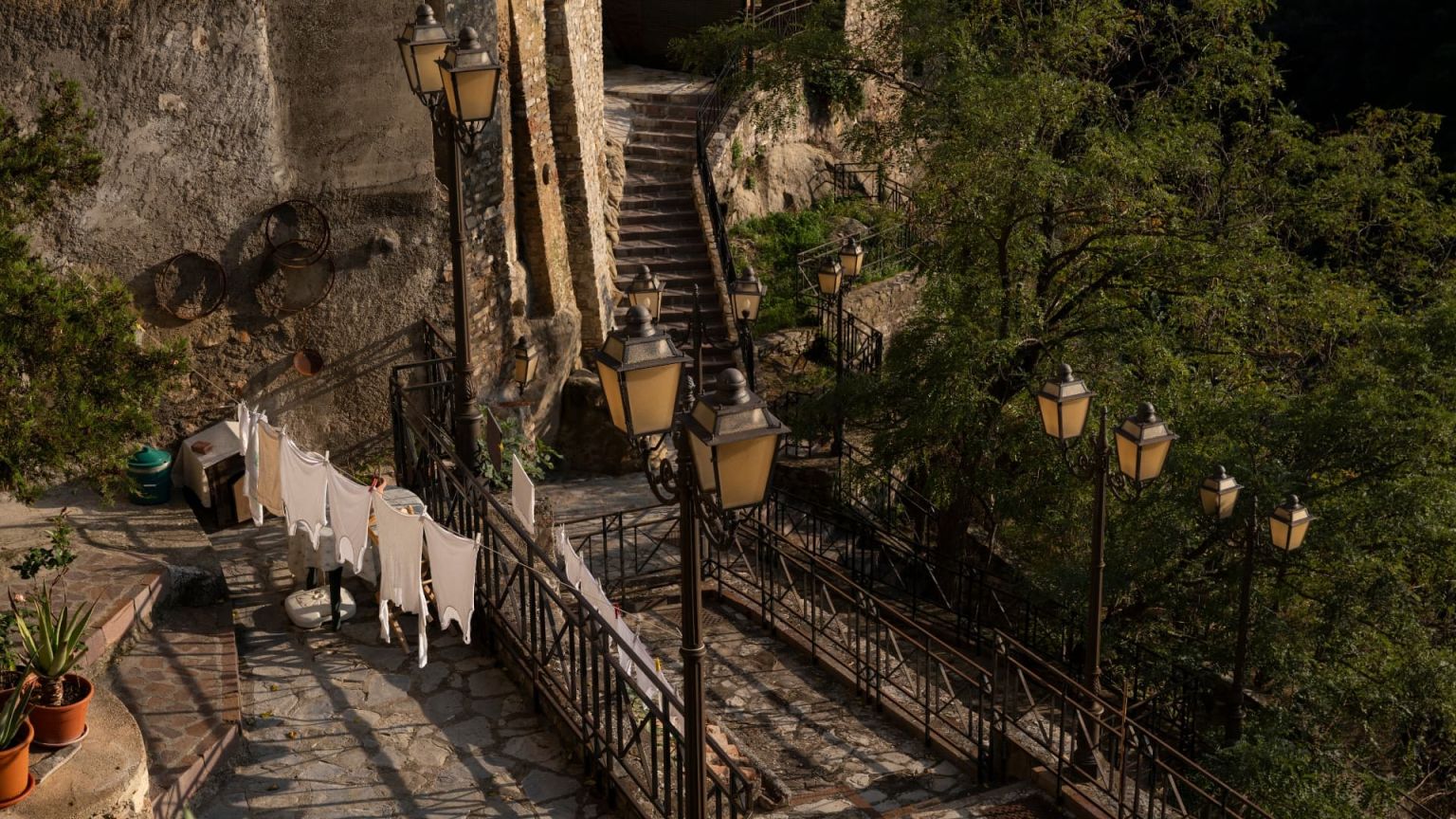
Where is Oriolo, Italy
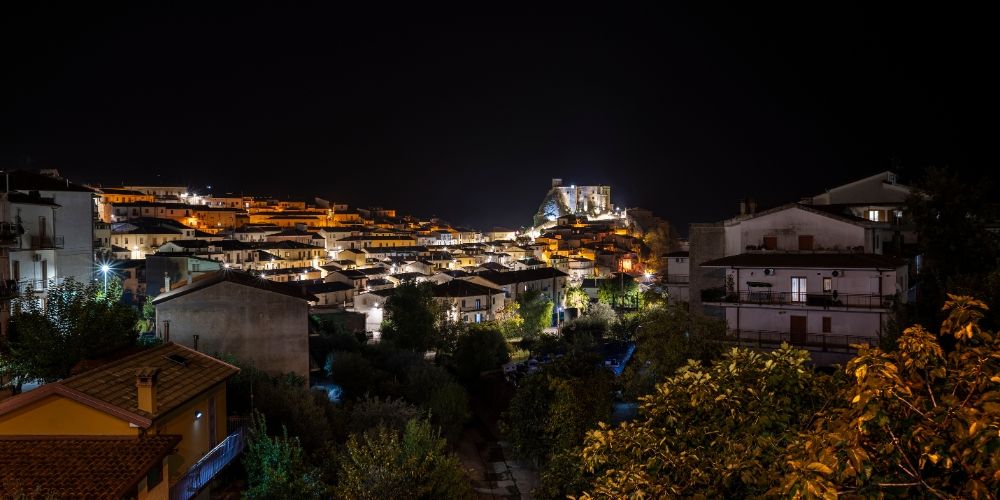
Oriolo lies in the Upper Ionian area of Calabria, right on the natural border with Basilicata. Its setting reflects a dual character, part coastal, part mountain. In less than half an hour, you can reach the beaches of Roseto Capo Spulico or the winding trails that climb towards the Pollino massif.
Its protected, panoramic position has long shaped local life. For centuries, agriculture thrived here, and even today the rhythm of the land still follows the slow turning of the seasons. Olive groves and wheat fields give way to forests in a natural mosaic that shifts in colour and atmosphere with every hour of the day.
Oriolo: Medieval origins and modern traditions
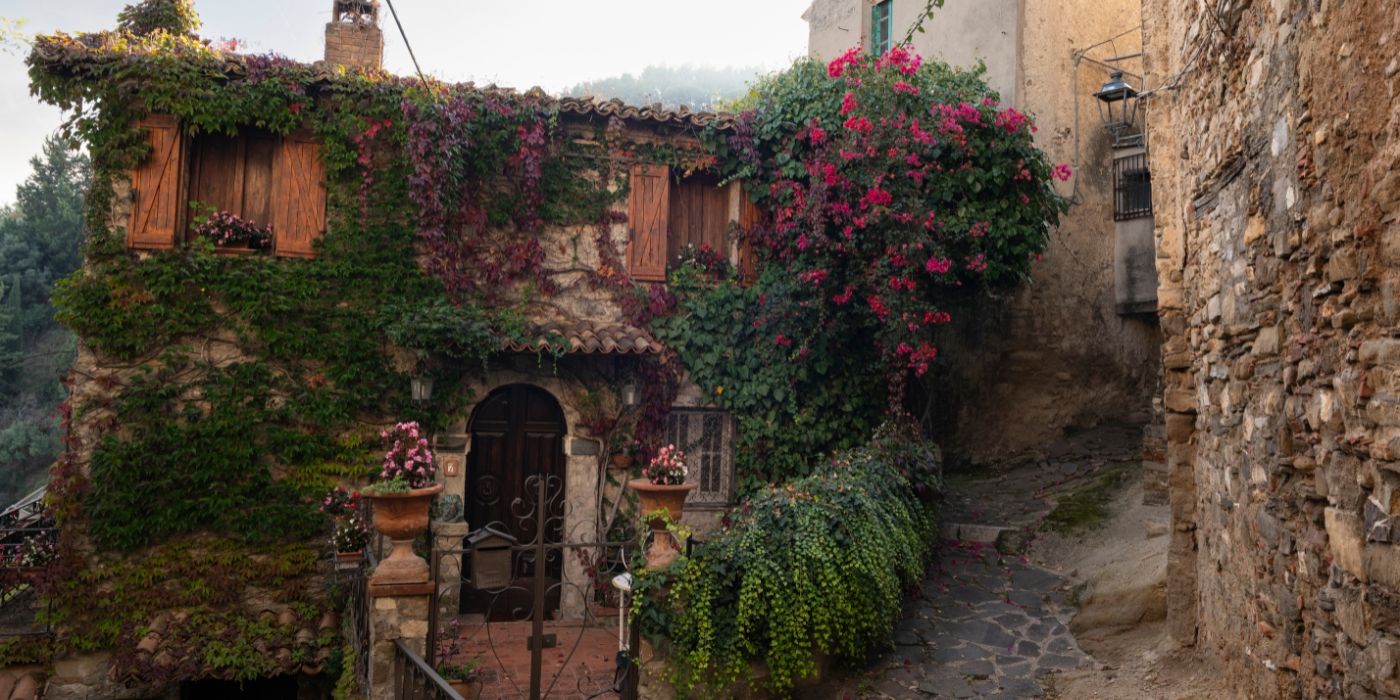
In medieval times, Oriolo stood as a defensive stronghold against Saracen raids. The castle, whose origins date back to before the 13th century, still tells the story of its medieval glory. It was around this fortress that the village took shape.
Over the centuries, Oriolo passed through the hands of nobles and princes, from the Della Marra to the Sanseverino families, and later the Pignone del Carretto, who enriched the town’s layout with elegant palaces, churches, and votive chapels.
Religious life once played a central role in this area. In the 18th century, the village boasted one brotherhood and three congregations, leaving behind a deep spiritual footprint still visible today in places like the convent of San Francesco d’Assisi, that archaeological excavations have recently brought to light.
Yet the true soul of Oriolo has always been its people: farmers, artisans, and families who kept traditions alive by turning them into a way of life.
Until the 1930s, Oriolo was a thriving town of nearly 5,000 inhabitants, with schools and healthcare services that made it a true point of reference for the Upper Ionian area.
Though its population has declined since then, Oriolo has reinvented itself with determination. The historic centre has been revived through cultural tourism, art initiatives, and the rediscovery of traditional crafts.
Strolling through its narrow lanes today, you can feel that invisible thread connecting memory and future. The spirit of a village that endures, renews and warmly welcomes all who come to visit Oriolo.
Visit Oriolo: among the most beautiful villages in Italy

Since 2016, Oriolo has been part of I Borghi più belli d’Italia, the association that brings together Italy’s most beautiful villages, chosen for the quality of their cultural, architectural, and natural heritage.
In 2024, Oriolo even hosted the National Festival of I Borghi più belli d’Italia, proving how a small town can become a cultural engine without losing its soul or turning into a caricature of itself.
Oriolo’s commitment has also been recognised with the Orange Flag (Bandiera Arancione) from the Touring Club Italiano, an award given to inland towns that stand out for sustainability, heritage preservation, and high-quality tourism.
Oriolo has learned to balance history with hospitality: clean streets, carefully restored buildings, and above all, a community that welcomes travellers as guests, not just passing tourists.
What to see in Oriolo, Calabria
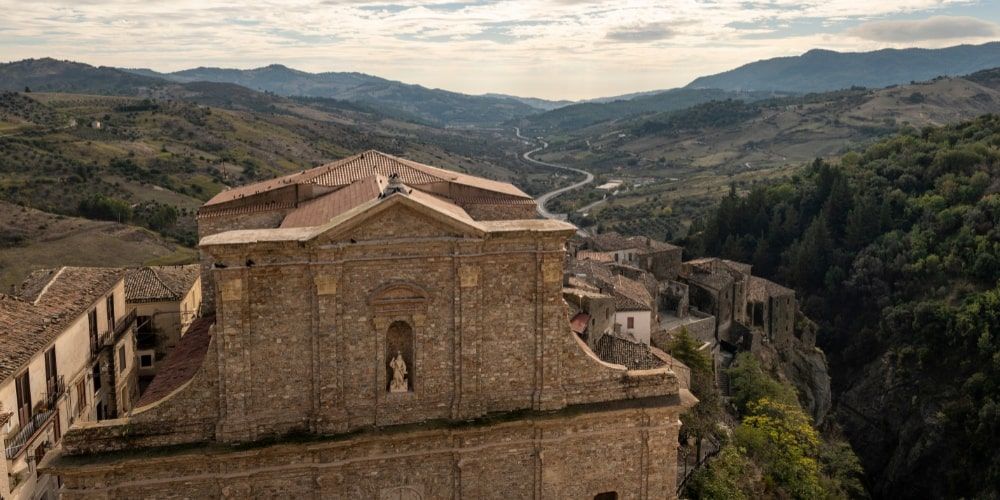
From the top of the castle, your gaze sweeps across the Ionian Sea and the Pollino mountains, two horizons that that mirror Oriolo’s dual character. The fortress is the village’s proud symbol, dominating the skyline with its solid stone walls.
Inside, the restored halls host exhibitions, events, and guided tours. Outside, the road winds down towards the historic centre, past stone houses, carved doorways, and wrought-iron balconies.
Every corner offers something to catch the eye: an ancient wooden door, a pocket-sized square, a workshop filled with the scent of carved wood.
Below the castle, the Mother Church of San Giorgio holds a modest but precious collection of sacred art, along with the relics of Saints George and Francis of Paola.
Not far away stands Palazzo Giannettasio, an 18th-century noble residence that now houses the Museum of Rural Life, a carefully curated display of farming tools, photographs, and everyday objects portraying Calabria’s rural past.
Another not-to-be-missed spot is the Portella open-air theatre, an enchanting stage for summer performances and concerts.
A little further from the town centre, archaeological excavations have revealed the remains of a 15th-century Franciscan convent, which is partly open to visitors. Another fragment of Oriolo’s rich history waiting to be fully revealed.
What to do in Oriolo

Once you’ve explored Oriolo and its main sights, it’s time to discover all the ways this corner of Calabria, from the mountains down to the sea.
From the village, you can set off on excursions into the Pollino National Park, along paths that lead to the Jannace Gorges and the Sanctuary of the Madonna del Pollino, the scenic loop around Serra di Crispo, or the higher routes towards the Piani del Pollino and the Grande Porta
Not far from Oriolo, you’ll find some of the most characterful villages of the hinterland: Morano Calabro, known as “paese presepe” for its tiered houses tumbling down the hillside like the figures of a traditional Christmas crib; Civita, an arbëreshë settlement where homes seem to take on human faces; Cersosimo, in the province of Potenza, a small medieval centre of stone palaces and baroque details; and San Giorgio Lucano, whose sandstone caves form part of the Pollino Geopark.
In summer, Oriolo also makes the perfect base for the coast. The Ionian shoreline is just a 20-minute drive away, with enchanting beaches such as Roseto Capo Spulico, Rocca Imperiale Marina, and Montegiordano Marina.
Back in the village, evenings are best spent in one of the local trattorias, where you can tuck into handmade fettuccine, stuffed aubergines, or pizza nel ruoto, the local version of the Italian cult dish.
Oriolo’s historic centre
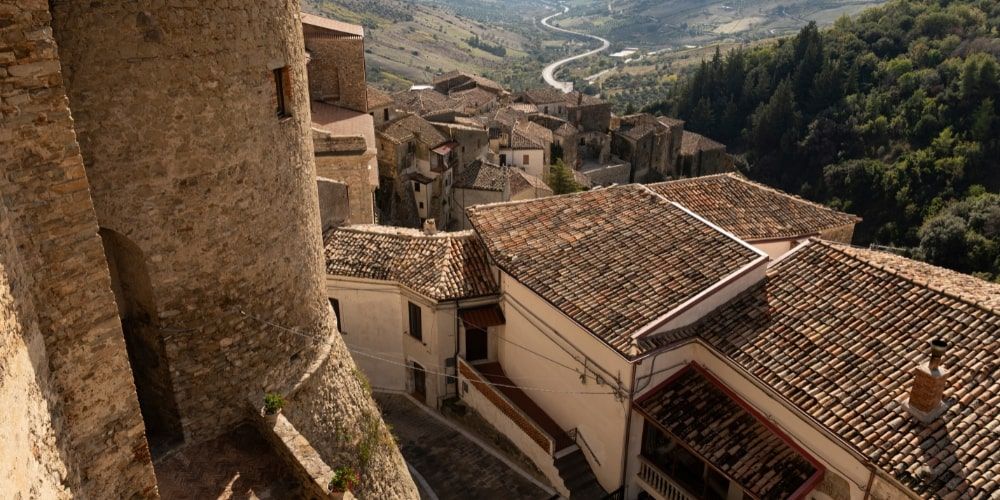
Oriolo’s historic centre preserves the layout of the original medieval village, remarkably intact through the centuries.
You can enter through three ancient gates: Barisana, Porta San Giacomo, and Portella. Near the latter stands the open-air Portella Theatre, a natural stage that hosts a much-loved summer drama festival.
Winding through the narrow lanes, you’ll come to Piazza Luigi Garibaldi, where the Mother Church of San Giorgio, recognised as a national monument, proudly overlooks the square.
The harmony between civil and religious architecture is still clearly visible. Alongside noble palaces once owned by the wealthy families and workshops where old crafts such as woodcarving and violin making are kept alive, you’ll also find many small votive chapels. Among the most notable is the Chapel of Our Lady of the Virtues, located just beyond Porta San Giacomo and rebuilt at the end of the 19th century on a structure dating back to 1651.
A jewel of a theatre in Oriolo
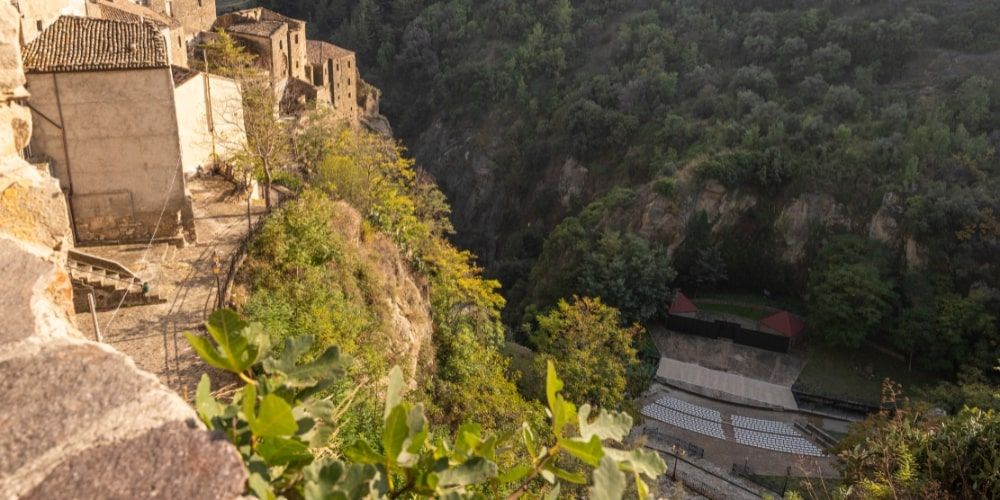
One of Oriolo’s cultural landmarks is the Portella Theatre, a place of extraordinary charm set in a landscape that is — quite literally — theatrical.
It lies at the foot of the old town, nestled in a narrow gorge carved by the Falce stream. The natural arena is framed on one side by a sandstone cliff that serves as a dramatic backdrop, and on the other by rock-hewn terraces rising towards the medieval village above.
During the summer months, the Portella Theatre hosts acclaimed theatre companies and artists, with performances set in a breathtaking open-air venue beneath the stars. Shows usually run between July and August, when the warm southern nights make the experience all the more magical.
MUDAM: Oriolo’s open-air museum of Arts and Crafts
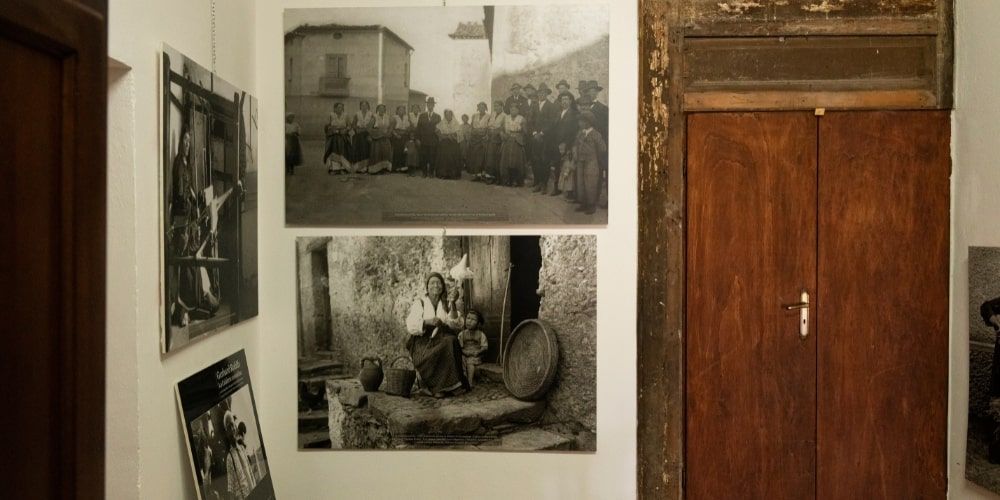
In Oriolo, culture is present in the streets, in workshops, and in daily routines. MUDAM, the Open-Air Museum of Arts and Crafts, was created to preserve and highlight both the physical and cultural heritage of the town.
More than a traditional museum, MUDAM is a journey through Oriolo’s history and identity, told through its places, architecture, and artisanal traditions.
The route includes the medieval castle, Palazzo Giannettasio – Casa della Cultura, as well as historic workshops, wine cellars, and the old putìe, the small village shops that still form part of the local streetscape.
The entire village is like a living exhibition that connects natural landscape, architecture, and the skilled hands that keep traditional crafts alive.
The trails are self-guided and clearly marked with coordinated signs, totems and panels that lead visitors through the main stops.
In doing so, Oriolo becomes a permanent laboratory of sustainable cultural tourism, a place where visitors can truly engage with the traditions of Calabria.
The house of arts and ideas

The recently opened Casa delle Arti e delle Idee (house of arts and ideas) is a space devoted to creativity and learning.
Housed in a beautiful noble residence in Oriolo's historic centre, it hosts workshops in cinematography, ceramics and lutherie, alongside exhibition and information areas that foster dialogue between art, craftsmanship and the local community.
It is a worthwhile initiative, created to keep Oriolo’s artisanal traditions alive while offering new opportunities for growth to younger generations.
Pollino National Park
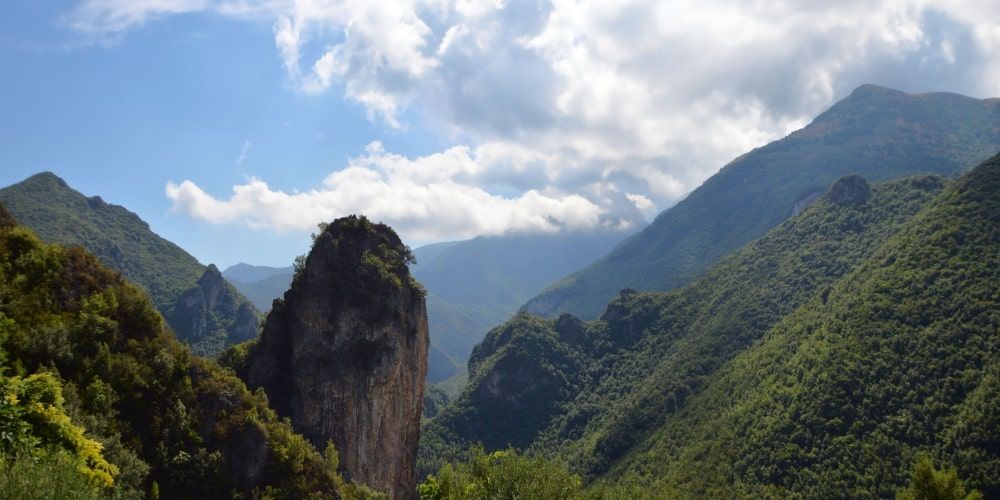
Just a short distance from Oriolo stretches the Pollino National Park, one of southern Italy’s most spectacular natural areas and the country’s largest protected park, covering more than 192,000 hectares across Calabria and Basilicata.
The landscape, spanning the provinces of Cosenza, Potenza, and Matera, is a vast mosaic of mountains, valleys, gorges, and high plateaus that rise above 2,000 metres.
On the Calabrian side, which encompasses the area surrounding Oriolo, there are numerous opportunities for hiking in the natural environment. Among the most popular trails are those leading to Serra di Crispo and Serra del Prete, where hikers can admire the park’s iconic Bosnian pine (Pino loricato), a hardy species that thrives in rocky, high-altitude terrain.
Another unmissable destination is the Raganello Gorge, a dramatic canyon whose sheer rock walls soar up to 400 metres high.
Pollino is a paradise for nature lovers, home to over 2,000 plant species and rich wildlife, including the golden eagle, the roe deer, and the Apennine wolf.
For those choosing Oriolo as a base, the park feels like a natural extension of the journey. Within half an hour, you can move from medieval alleyways to the wild, untamed landscapes of the Calabrian interior.
Sustainable food tourism
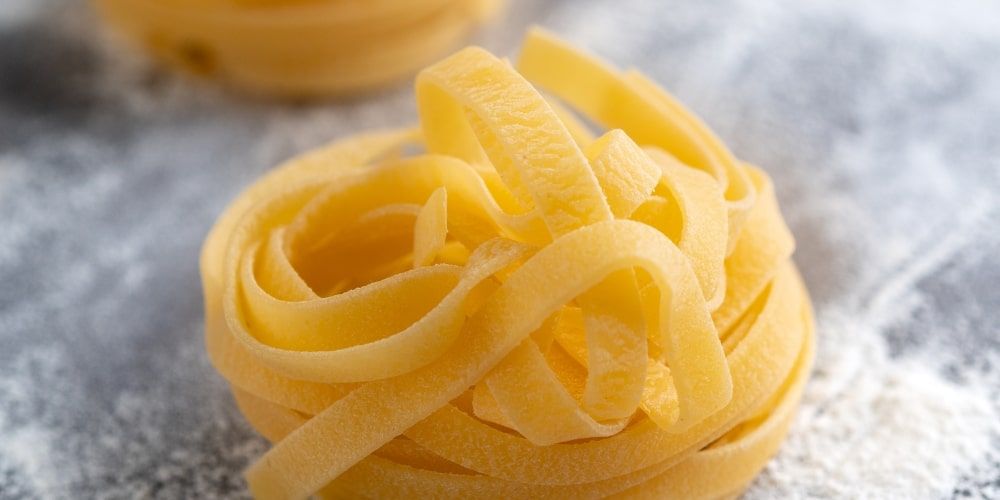
Every dish tells the story of the place it comes from. This is the essence of the gastronomic and experiential tourism that, in recent years, has helped make Oriolo known beyond regional borders.
Gourmets will love tasting the three products that bear the De.Co. (Denominazione Comunale d'Origine) label: capretto da latte, or milk-fed goat, reared according to natural methods; taralli al finocchietto, crisp and fragrant fennel biscuits still handmade in homes and bakeries throughout the village; and Extra-Virgin Olive Oil, a symbol of fertile farmland cared for with respect.
Among the most distinctive dishes of Oriolo’s cuisine are two hearty pasta recipes: firzuli with breadcrumbs and rasctèlli with ricotta and peppers.
Completing the table are stuffed aubergines, meat rolls, pizza nel ruoto, and busiate, long pasta made by hand with the traditional iron rod. To end the meal, a glass of Ulivar, a liqueur made from olive leaves and produced locally.
Farms and small osterias also open their doors to visitors for tastings and cooking workshops, allowing them to discover local products right where they are made. This is how to visit Oriolo through its flavours.
Visit Oriolo for events and festivals

Moments of devotion, folk festivals, theatre, music, and cultural gatherings: every event brings the whole community together. But what's the best time to visit Oriolo?
In April, the village celebrates its patron saints, San Giorgio and San Francesco di Paola. Between the 22nd and 24th, the streets come alive with markets, workshops and street food stalls, all accompanied by live music from the centuries-old Banda di Oriolo, the village’s marching band. Among the most colourful and picturesque moments is the flight of a handmade hot-air balloon rising above the rooftops.
The highlight of the summer is the Oriolo Cult Festival, a series of events that brings performances, music and talks to the most atmospheric corners of the village.
During the summer, the Portella Theatre hosts companies and artists from across Italy, with open-air performances set against a backdrop of great charm.
In the second half of August, Oriolo celebrates the Vincanta wine festival, featuring tastings, guided tours, vineyard visits and events dedicated to local winemaking traditions.
How to get to Oriolo
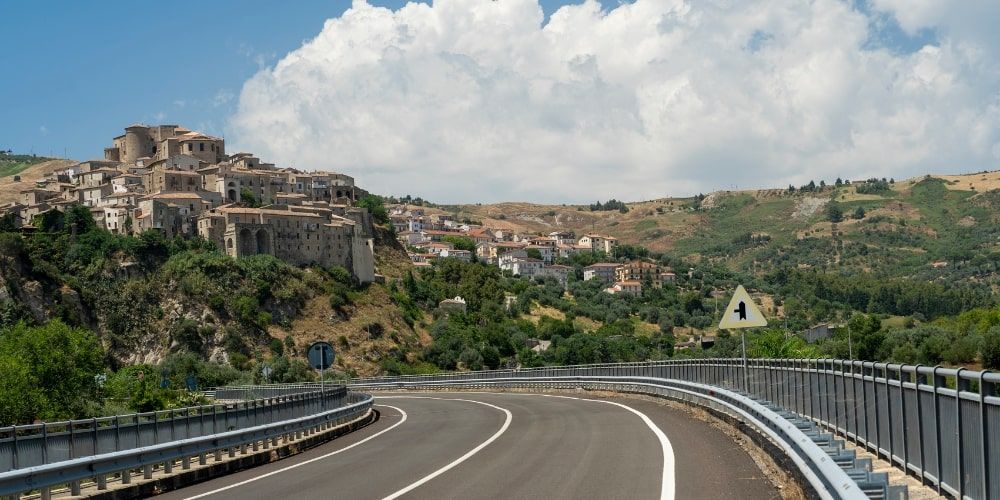
How to visit Oriolo? There are several options for travellers arriving from other regions or from the Ionian coast.
By car: if you’re travelling from the A2 “Salerno–Reggio Calabria” motorway, take the Lauria Nord exit, then follow the SS 653 Sinnica and continue on the SS 481 towards Oriolo. Alternatively, from the Ionian coast, you can take the SS 106, joining the SS 481 at Amendolara in the direction of the village.
By public transport: the nearest railway station is Amendolara–Oriolo, on the Taranto–Reggio Calabria line. However, trains run only a few times during the summer season. At other times of year, it’s best to take a train to Trebisacce or Policoro, and from there continue by SAJ bus to Oriolo or the surrounding towns.

